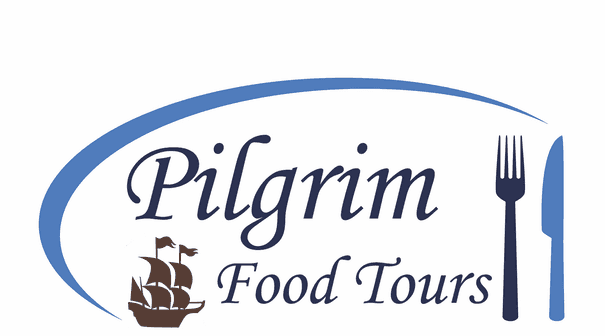5 Questions with Lauren Gustafson of Pilgrim Food Tours
1. What foods is Plymouth known for?
As a coastal town, Plymouth is known for its fresh, local seafood. Favorite recipes include New England clam chowder, steamed lobsters, fried clam rolls, and seafood platters, just to name a few. One of our favorite stops along the Plymouth Waterfront is Wood’s Seafood. Wood’s operates a seafood market on Town Wharf that has been selling fresh seafood to locals for over eighty years. From the adjoining restaurant, diners can literally watch the fishermen pull up to the wharf and delivery the daily catch, so they know they are eating the freshest seafood around.
2. What neighborhood should people visit when they come to Plymouth?
Visitors should visit Downtown Plymouth and the Waterfront. This one-mile stretch of land contains over fifty restaurants, as well as numerous retail and specialty shops. In between eating and shopping, this part of town offers visitors plenty of opportunity to learn about Plymouth’s unique history. When the Pilgrims arrived in Plymouth in 1620, they built their settlement on what eventually became Downtown Plymouth. Today, visitors can walk along the Pilgrim’s First Street, relax by the Town Brook that once provided drinking water to the original colonists, and visit a replica of the ship that carried the Pilgrims to America. It is because of this amazing combination of delicious eateries and rich historical sites that we developed our food tour in this part of town.
3. What is the best time of year to visit Plymouth?
New England winters can be brutal, but our town comes alive once the snow melts. Visitors should plan their trip between April and November to avoid packing their snow boots. Once the spring flowers start to bloom, visitor will find a busy schedule of concerts, festivals, road races, and other activities that take place on the Waterfront during the spring and summer months. The fall is also a wonderful time to visit, as Plymouth celebrates its historical ties to Thanksgiving.
4. What can people expect from your food tours?
Our food tours are the most delicious way to experience America’s Hometown! We’ve handpicked a selection of restaurants, specialty shops, and historical sites that offer tour guests a truly unique view of our town. Tour guests will walk approximately 1.25 miles during our 3 hours tour, and enjoy tastings from 6 local eateries. To ensure that our tours offer something for locals, as well as visitors, we’ve included some lesser known historical sites on our tour. In addition to visiting Plymouth Rock–the town’s most visited historical site–tour guests will see the house where Mercy Otis Warren penned one of the first histories of the American Revolution, as well as the home where Ralph Waldo Emerson was married.

5. Give us some food trivia about Plymouth
Every visitor to Plymouth wants to know what the Pilgrims actually ate at the first Thanksgiving. Their feast didn’t really resemble today’s Thanksgiving menu, but it did include many of the wonderful foods that are still eaten in our region today. The Pilgrims and Wampanoag enjoyed a menu of both meats and seafood during the three day feast. Lobsters, clams, and mussels were abundant and are still favorites today. Since the first Thanksgiving was a celebration of a bountiful harvest, it also included plenty of fruits and vegetables. Cranberries, blueberries, corn, carrots, onions, and pumpkins were eaten, but apples and potatoes had not yet been introduced to North America. With such a rich and delicious history, visitors to our region should make sure to get their fill of local seafood and produce!

